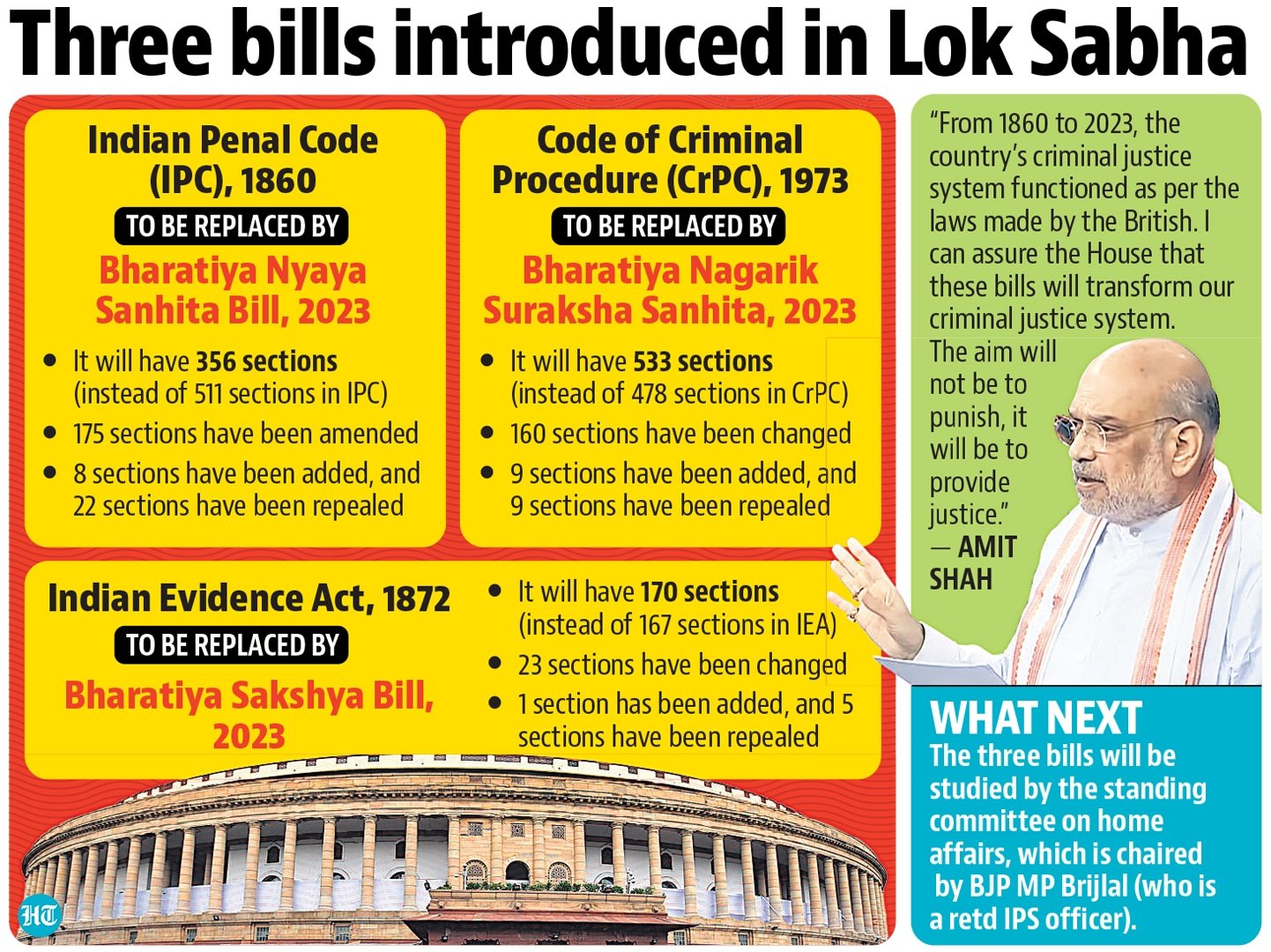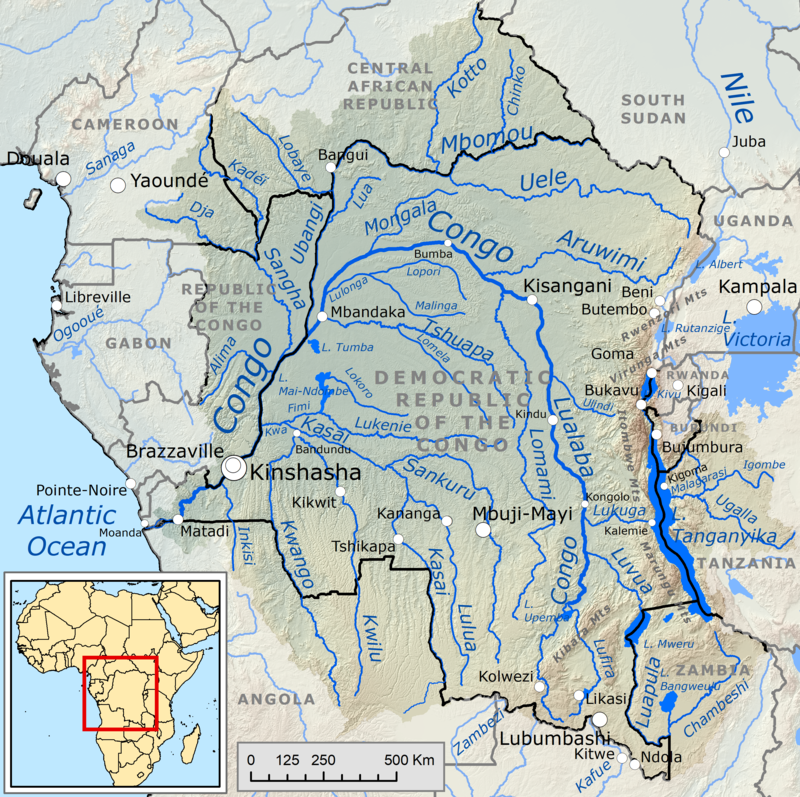
Current Affairs for UPSC Civil Services Exam – July 02, 2024
Subscribers of "Current Affairs" course can Download Daily Current Affairs in PDF/DOC
Subscribe to Never Miss an Important Update! Assured Discounts on New Products!
Must Join PMF IAS Telegram Channel & PMF IAS History Telegram Channel
{GS2 – Polity – IC – Elections} Section 123(3) of the RPA 1951 **
- Context (TH): A public interest litigation had challenged the constitutional validity of a provision introduced in 1975 to Section 123(3) of the Representation of the People Act (RPA), 1951.
Section 123 of Representation of the People Act, 1951
- It lists bribery, undue influence, and the use of religious/national symbols as corrupt electoral practices that could lead to the setting aside of the election of a candidate.
Section 123(3)
- It declares the use of religious/national symbols either for the furtherance of the prospects of a particular candidate or for prejudicially affecting the election of any other candidate as a corrupt practice.
- The objective of the introduction of Section 123(3) in 1961 was to curb the communal and separatist tendencies among the contestants and to widen the scope of the term “corrupt practice”.
1975 amendment
- 1975 amendment to Section 123(3) excludes the ECI-allotted symbols from its ambit.
- It was clarified that no symbol allotted to a candidate by the Election Commission of India (ECI) shall be considered a religious/national symbol.
Petitioners stand
- The petitioner said that the proviso was watered down in 1975, the very purpose of Section 123(3).
- The Election Symbols (Reservation and Allotment) Order, 1968, does not permit a political party to propose a symbol with any religious/communal connotation or depicting any bird or animal.
- In such a case, there should not be any immunity to the symbols allotted by the ECI.
- The 1968 order prohibits political parties from proposing any bird or animal as an election symbol.
- But the ECI allotted the ‘elephant’ as a symbol despite its religious connotation of depicting Lord Ganesha, who was worshipped by millions of Hindus.
- Therefore, the petitioner said that the proviso to Section 123(3) of the RP Act must be declared ultra vires, unconstitutional and illegal.
{GS2 – Polity – IC – Federal Structure} Emergency Provision *
- Context (IE): On June 25, India marked fifty years since the imposition of the Emergency.
- During 21-month period from 1975 to 1977, civil liberties were suspended, press freedom was curtailed, mass arrests were conducted, elections were cancelled, and rule by decree was enforced.
National Emergency
- An emergency is a state of affairs that departs from normalcy and necessitates prompt corrective actions.
- The Constitution of India outlines three categories of emergencies:
- National Emergency (Article 352)
- President’s rule or State Emergency (Article 356)
- Financial Emergency (Article 360)
Grounds for invoking a national emergency
- Under Article 352, when war, external aggression, or armed rebellion threatens the security of India or a part of it, the President can declare a national emergency.
- The President may declare a national emergency, even before the occurrence of the actual threat, if he is satisfied that the safety of India or a part of it is threatened.
Types of emergencies:
- External Emergency: Due to war or external aggression, it is an external emergency.
- Internal Emergency: Due to armed rebellion, it is an internal emergency.
Procedures for authorisation and duration of a national emergency
- Proclamation made under Article 352 for the imposition of a national emergency should be laid before each House of Parliament and must be approved by them with a special majority.
-
Approval:
- Within one month after the date of the proclamation of national Emergency, it must be ratified by both houses of Parliament.
- If the Lok Sabha is not in session or has been dissolved before the expiry of one month after promulgation, the proclamation must be approved within 30 days from the first sitting of the newly constituted Lok Sabha, provided that the Rajya Sabha approves it in the meanwhile.
|
-
Duration:
- Normally, the Emergency will be in effect six months after approval.
- However, such a proclamation may be extended indefinitely, with each extension receiving parliamentary approval by a special majority every six months.
Impacts of the imposition of a national emergency
- Executive: Centre’s executive authority extends to advising any state to exercise its executive authority.
- Legislative: The Parliament can enact laws on any item in the state list.
- Financial: The President is empowered to modify the provisions regarding the distribution of revenues between the Union and the States.
-
Lok Sabha: For up to one year at a time, while a declaration of National Emergency is in effect, the Lok Sabha’s life may be prolonged beyond its regular term.
- This extension, however, is only valid for a maximum of six months after the Emergency has ended.
- State Assembly: Parliament may repeatedly extend the normal term of a state Legislative Assembly by one year, up to a maximum of six months after the situation has ended.
Effect on Fundamental Rights
-
Article 358:
- Suspension of fundamental rights under Article 19.
- The six fundamental rights under Article 19 are immediately suspended when a proclamation of national Emergency is made under Article 358 on the grounds of war and external aggression.
- Article 359:
- Suspension of other fundamental rights.
- President is authorised to suspend the right to petition in any court to enforce fundamental rights.
- However, the right to judicial remedy for enforcing Articles 20 and 21 cannot be suspended.
- The suspension of enforcement relates to only those fundamental rights per the presidential order.
Revoking of National Emergency
- Articles 352(2) and 352(7) provide for the revocation of the proclamation of Emergency.
- The President may revoke an emergency proclamation by making a subsequent proclamation without parliamentary approval.
- The proclamation ceases to operate on the expiry of 6 months unless the continuance of the proclamation for a further period of 6 months has been approved by both houses of the Parliament.
Instances when the National emergency was imposed in India
-
Indo-China war, 1962
- The first Emergency was declared in October 1962, when the Indo-China war broke out. Although a ceasefire was declared a month later, the Emergency was not revoked.
-
Bangladesh Liberation War (Indo-Pak War), 1971
- The second Emergency was imposed in December 1971, when the Bangladesh Liberation War broke out, and India was a significant player in it.
- Internal Emergency, 1975
- Unlike the first two, the third Emergency was an internal Emergency, and it was imposed on the ground of internal disturbances.
{GS2 – MEITY – Schemes} Digital India initiative
- Context (PIB): The PM has lauded the completion of 9 years of the Digital India initiative.
Digital India initiative
- It was launched in 2015 to transform India into a digitally empowered society and knowledge economy.
- The Digital India initiative is a comprehensive umbrella programme that covers multiple Government Ministries and Departments, ensuring a holistic approach to digital transformation.
- Digital India encompasses key vision areas of:

Credits: Skyram
- Nine pillars of growth areas:
- Broadband Highways: This covers Broadband for All, Rural Broadband.
- Universal Access to Mobile Connectivity: This initiative focuses on network penetration and filling the gaps in the country’s connectivity.
- Public Internet Access Programme: The two sub-components of the Public Internet Access Programme are Common Services Centres and Post Offices as multi-service centres.
- e-Governance: Reforming Government through Technology: Government Process Re-engineering using IT to simplify and make the government processes.
- e-Kranti – Electronic Delivery of Services: Over the years, sustained efforts have been made at multiple levels to improve the delivery of public services.
- Information for All: Open Data platform facilitates proactive release of datasets in an open format by the ministries/departments.
- Electronics Manufacturing: Target NET ZERO Imports is a striking demonstration of intent.
- IT for Jobs: This pillar focuses on training youth in the skills required for employment opportunities in the IT/ITES sector.
- Early Harvest Programmes: An Early Harvest Programme consists of projects that are to be implemented within a short timeline.
{GS2 – IR – Asia} Balloon War
- Context (TH): Balloons used for psychological warfare between North and South Korea send propaganda across borders, escalating tensions.
- South Korean activists from “Fighters for Free North Korea” send about ten balloons carrying critical leaflets and USB drives with South Korean media (K-pop, dramas) across the border.
Balloon war
- This refers to activists and organisations’ ongoing use of balloons in South Korea to send leaflets and propaganda materials.
- Activists use balloons to send leaflets and propaganda into North Korea, aiming to counter the government’s tight control over information.
- This balloon exchange is happening against the backdrop of North Korea’s nuclear program and stalled diplomatic efforts to address it.
- It aims to undermine the enemy’s morale and sow doubt among the population about their government and its propaganda.
To learn more about the Korean peninsula tension, refer to> Korean peninsula

Credit: TH
{GS3 – S&T – AI} Global India AI Summit 2024
- Context (PIB): The Ministry of Electronics and Information Technology is organising the ‘Global IndiaAI Summit’ in New Delhi.
Global India AI Summit 2024
- The event underscores the Government of India’s dedication to the responsible advancement of AI, fostering collaboration and knowledge exchange among global AI stakeholders.
- As the lead chair of the Global Partnership on Artificial Intelligence (GPAI), India will host member countries and experts to advance GPAI’s commitment to safe, secure, and trustworthy AI.
About IndiaAI Mission
- Under the Ministry of Electronics and Information Technology.
- Aims to ensure a structured implementation of the India AI mission through a public-private partnership model to nurture India’s AI innovation ecosystem.
- Implemented by ‘IndiaAI’ Independent Business Division under Digital India Corporation (DIC).
- This mission drives responsible and inclusive growth of India’s AI ecosystem through the following seven pillars, which will be the key focus of the Global IndiaAI Summit:
- IndiaAI Compute Capacity: AI computing ecosystem with over 10,000 GPUs.
- IndiaAI Innovation Centre: Indigenous large multimodal models (LMMs) and domain-specific foundational models.
- IndiaAI Datasets Platform: This platform aids Indian startups and R&D for AI models.
- IndiaAI Application Development Initiative: Impactful AI solutions for large-scale socio-economic transformation.
- IndiaAI FutureSkills: Increasing AI courses at various academic levels and establishing Data and AI Labs in Tier 2 and 3 cities.
- IndiaAI Startup Financing: Supporting deep-tech AI startups.
- Safe & Trusted AI: Responsible AI projects, developing indigenous tools and frameworks and establishing guidelines for ethical, transparent, and trustworthy AI technologies.
To learn more about Regulating AI, refer > Regulating AI
{GS3 – Envi – Conservation} New Portal Documents Indian Fauna *
- Context (DTE): The Union Minister of Environment, Forest, and Climate Change (MoEFCC) launched a unique portal documenting all animal species in India, the first of its kind in the world.
More about the news
- India became the first country in the world to compile a checklist of its entire fauna. Endemic, threatened and scheduled species have also been included.
- It was launched during the 109th foundation day celebration of ZSI.
New species
- It recorded 641 new faunal species in 2023 across India.
- It includes 442 new species at the global benchmark and 199 species newly recorded in India.
- Kerala recorded the newest discoveries, with 101 species.
- West Bengal recorded 72 discoveries.
- Tamil Nadu was third with 62 new species.
- Arunachal Pradesh and Karnataka each recorded 45 new species.
- The most discoveries were hymenopterans (112) and arachnids (86), followed by 47 fish, 20 reptiles, and two mammals.
- Hymenoptera is a large order of insects comprising sawflies, wasps, bees, and ants.
- Arachnids are arthropods in the class Arachnida of the subphylum Chelicerata. Arachnida includes, among others, spiders, scorpions, ticks, mites, pseudoscorpions, harvestmen, camel spiders, whip spiders and vinegarroons.
- The two new mammals discovered are:
- An ibex species found in Himachal Pradesh and Ladakh is named Capra Himalayensis.
- A bat species found in Kodagu district, Karnataka, named Miniopterus Srinii.
Zoological Survey of India (ZSI)
|
{GS3 – S&T – Tech} Brain implant to control Epileptic seizures
- Context (IE): A UK-based teenager has become the first person in the world to be fitted with a brain implant to help bring his epileptic seizures under control.
Deep Brain Stimulation (DBS)

Credits: Indian Express
- DBS involves an implanted device that delivers an electrical current directly to areas of your brain.
- The device used to treat epilepsy is inserted into the brain, reaching the thalamus, and recharged by a wireless headphone.
- These electrical impulses and signals to the brain disrupt or block abnormal seizure-causing signals.
- Can treat several conditions like: Parkinson’s disease, Essential tremor, and Conditions that cause dystonia, such as Meige syndrome, Epilepsy, Tourette syndrome, and Obsessive-compulsive disorder.
- Expensive and less efficient: Reduces seizures by 40% compared to 90% in the case of brain surgery.
Epilepsy
- It is a brain disease caused by abnormal electrical activity in the brain.
- Symptoms: Shaking arms and legs, temporary confusion, staring spells, or stiff muscles.
- Causes: Head trauma, tumours in the brain, some infections like meningitis, or even genetics. However, the reason for epilepsy is not known in nearly 50% of the cases.
Treatments available other than DBS
- Ketogenic diet: Reduces seizures, even in children with treatment-resistant epilepsy.
- Brain surgery: To remove a portion of the brain where the seizures originate.
{GS3 – Envi – Initiatives} Eco-Labels
- Context (DTE): Eco-labels can help consumers make informed choices about eco-friendly products, combat greenwashing, and support sustainable development.
Eco-labels
- Eco-labels are certification labels that indicate a product has met specific environmental criteria, helping consumers identify environmentally friendly products.
The SDG’s (Sustainable Development Goal) relevance in eco-labelling
- SDG 12: Responsible Consumption and Production: Eco-labelling promotes sustainable consumption by informing consumers about the environmental impact of products.
- Target 12.6: Encouraging companies to adopt sustainable practices, which eco-labelling supports by certifying environmentally friendly products.
- Target 12.8: Increasing awareness and information about sustainable lifestyles, facilitated by eco-labels that provide transparency on product sustainability.
Role of eco-labelling
- Consumer Empowerment: Indicate the environmental impact of products to help consumers make informed choices. The campaign that promoted hallmarks in jewellers could serve as a model.
- Promoting Sustainability: Encourages companies to adopt sustainable practices to obtain eco-label certifications.
- Combatting Greenwashing: Certifies genuine eco-friendly products, thereby reducing deceptive environmental claims.
- Market Differentiation: Allows eco-friendly products to stand out in the marketplace, attracting environmentally conscious consumers.
- Policy Support: Aligns with sustainable development goals by promoting responsible consumption and production practices.
Also refer, ECOMARK.
{Prelims – In News} Tianlong-3 rocket
Context (TH): Private Chinese space rocket Tianlong-3 crashes after accidental launches during test run.
Tianlong-3
- Tianlong-3 (Mandarin for “Sky Dragon“) is a medium-lift orbital launch vehicle developed by the Chinese private aerospace manufacturer Beijing Tianbing, also known as Space Pioneer.
- It is partially reusable (up to ten times). The first stage can perform an autonomous vertical landing.
- It can launch medium-sized payloads to low Earth orbit (LEO) and sun-synchronous orbit (SSO).
- The performance of Tianlong-3 is comparable to SpaceX’s Falcon 9, which is also a two-stage rocket.
{Prelims – In News} Exercise MAITREE
- Context (PIB): The Indian Army and Royal Thailand Army (RTA) will conduct their 13th joint Military Exercise MAITREE-2024 at Fort Vachiraprakan in Tak Province, Thailand.
About Exercise MAITREE
- It is an annual training event that has been held alternately in India and Thailand since 2006.
- Aims to practice joint counter-insurgency and counter-terrorism operations in jungle and urban environments under Chapter VII of the United Nations Charter.
- The exercise will focus on high physical fitness, joint planning, and joint tactical drills.
{Prelims – Sci – Chemistry} New Metal Oxide Nanocomposite
- Context (PIB): A new metal oxide nanocomposite has been developed to help photocatalytic degradation of organic pollutants like dyes and pharmaceuticals.
Metal Oxide Nanocomposite
- It was developed by the Institute of Advanced Study in Science and Technology (IASST), an autonomous Department of Science and Technology (DST) institution.
- It consisted of Ni-doped TiO2 on Fuller’s earth (NiTF), tested as a photocatalyst for methylene blue decolourisation.
- Fuller’s earth improved TiO2 adsorption in dark, suggesting cost-effective environmental photocatalysts.
Metal Oxide Photocatalysis
- It involves using metal oxide materials as catalysts that light can activate to promote chemical reactions.
- These photocatalysts absorb light energy and produce pairs of electrons and holes, which can take part in redox reactions that degrade pollutants into harmless by-products.
- Titanium dioxide (TiO2), Zinc oxide (ZnO), and Tungsten trioxide (WO3) are common catalysts used in photocatalysis due to their stability and absorption properties.
- Factors affecting efficiency of Metal oxide Photocatalysis: Choice of metal oxide, Crystal structure, Light parameters, Pollutant concentration, pH, Catalyst loading.
Applications
- Photocatalysis: Helps in removing organic pollutants from water bodies.
- Energy storage: Used in solar cells.
- Sensors: Used in ultra trace-level gas sensors.
- Biomedical fields: Used as an alternative to conventional antimicrobial agents.
- Coatings and optoelectronics.
- Renewable energy production through water splitting.
Photocatalytic degradation
|
{Prelims – In News} Human Space Flight Programme *
- Context (TH): Blue Origin has announced India as a partner nation in their human spaceflight programme for citizens.
More about the news
- Blue Origin will offer citizens from across the world six seats on a future mission of its reusable sub-orbital rocket, New Shepard.
- The selected astronauts will go for an 11-minute journey past the Kármán line (100 km), the internationally recognised boundary of space.
- Astronauts will experience several minutes of weightlessness during the controlled descent.
- The final candidate will be voted for by the public. They can garner votes by telling their story to the public, and voting will progress through candidate elimination across three phases.
Human Space Flight Missions
- It aims to take astronauts beyond Earth’s atmosphere.
- Soviet Union’s Vostok program was the first human flight mission which took Yuri Gagarin to lower earth orbit in April 1961.
- Project Mercury was the first U.S. human spaceflight program.
- The Apollo program of the U.S. made the first human landing on the Moon in 1969.
- India’s Gaganyan mission plans to conduct a 3-manned flight at low-earth-orbit in 2024.
To know about Gaganyaan Mission, refer > Gaganyaan Mission
{Prelims – In News} Caribbean Islands
- Context (IE): Hurricane Beryl is forecasted to become a Category 4 storm near the Caribbean.
- Beryl is anticipated to track just south of Barbados and then move into the Caribbean Sea as a powerful hurricane, heading towards Jamaica and eventually Mexico.
- To learn more about Tropical cyclones, refer > Tropical cyclones
Caribbean Islands
- The Caribbean archipelago stretches from Cuba in the northeast to Trinidad and Tobago in the southwest, including the Venezuelan islands of Aruba, Bonaire, and Curacao.
- It forms the eastern border of the Caribbean Sea and touches Central and South America, including countries like Venezuela, Colombia, Panama, Costa Rica, Nicaragua, Honduras, Guatemala, and Belize.
- The West Indies is a diverse region, blending multiracial, multicultural, and multilingual communities of aboriginal, European, African, and Asian ancestry, creating a unique Caribbean cultural identity.

Credit: International Living
Also refer > Ocean-Ocean Convergence and Volcanic Island Arc Formation.
CARICOM Countries
- Established in 1973, CARICOM promotes economic integration and coordinates foreign policy among 15 Caribbean member states, aiming for equitable benefit distribution.
- Secretariat: Georgetown, Guyana. CARICOM holds observer status at the United Nations.
- Member nations include Antigua and Barbuda, the Bahamas, Barbados, Belize, Dominica, Grenada, Guyana, Haiti, Jamaica, Montserrat, St. Kitts and Nevis, St. Lucia, St. Vincent and the Grenadines, Suriname, and Trinidad & Tobago.
- The organisation rotates its chairmanship every six months, ensuring all members have an equal say regardless of size or economic status.
- The CARICOM Single Market and Economy aims to foster regional prosperity by facilitating trade, investment, and economic opportunities across the Caribbean.
{Prelims – Envi – Species} Chiretolpis Erubescens
- Context (TH): Chiretolpis erubescens, a rare moth species endemic to the Western Ghats, has been “rediscovered” in the Nilgiris after a gap of 132 years.
- It was first recorded by British entomologist George Francis Hampton in 1891.
- The moth dominated the human landscape in Coonoor. It has an orange head and a thorax with a streaked tibia. Hair-like scales on its wings.

Credit: TH
To know more about the Nilgiris biosphere, refer >Nilgiris Biosphere
{Prelims – Envi – Species} Malayan Tigers
- Context (DTE): Malaysia’s Parliament was told that fewer than 150 Malayan tigers are left in the wild.
Malayan tiger
- The Malayan tiger (Panthera tigris jacksoni) is also known as Harimau Malaya.
- Distribution: Southern and Central parts of the Malay Peninsula and Southern parts of Thailand.
- It is the national symbol of Malaysia.
- The Malayan tiger is a solitary animal except during mating (November – March).
- Threat: Habitat loss, poaching, destruction of biodiversity, deforestation, and urbanisation.







![PMF IAS Environment for UPSC 2022-23 [paperback] PMF IAS [Nov 30, 2021]…](http://pmfias.b-cdn.net/wp-content/uploads/2024/04/pmfiasenvironmentforupsc2022-23paperbackpmfiasnov302021.jpg)











